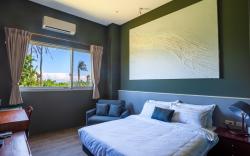Luye Kunzi Temple and Luye Shrine Introduction
Public transportation link >> Taiwan Tourist Shuttle - Zonggu Luye Line information (schedule/fare table) Accessible bus reservation >>> Taiwan Tourist Shuttle accessible reservation information Next to the Luye Longtian Bicycle Path, there is a temple surrounded by ancient trees, which is the Kunzitang, dedicated to the worship of the Yaochi Golden Mother. It serves as a religious center for the locals and a gathering place for community conversations. Kunzitang is unique, featuring a blend of Japanese shrine and Taoist temple architecture. The current location was once the site of a shrine in an immigrant village during the Japanese occupation and was also where Master Cheng Yen once resided for practice. If you want to learn about the history of Longtian Village, Kunzitang is a must-visit cultural landmark. The Luye Shrine, which bears witness to the history of Longtian immigrant village, is located behind Kunzitang. During the Japanese occupation, it was the faith center for the village, dedicated to the Three Deities of Development and Prince Yoshihisa of the Kitabukawa clan. It holds events like the Annual Ritual and Taiwan Shrine Establishment Day every year. When villagers hold weddings or enlist for military service, grand ceremonies take place here, making it the most important shrine in the Luye District. After the war, only a pedestal remained of the shrine. In 2014, through collaboration with Japanese craftsmen, the appearance of the former shrine was restored, featuring a simple torii gate and a small, exquisite main shrine, making visitors feel as though they were traveling in Japan, becoming a popular photo spot. Under the Ciji tree, residents share stories After Taiwan's restoration, the deities worshiped at Luye Shrine were invited back to Japan, and residents began to enshrine local deities such as Tudigong, Mazu, and Yaochi Golden Mother in the original shrine site. The robust and ancient Eggplant Winter Tree and Neem Tree in front of the hall have become a great place for residents to cool off and chat. It was also where Master Cheng Yen, before becoming a monk, practiced with his master and discussed Buddhism with residents under the trees, which is why it is known as the Ciji Tree, commemorating the place of the Master's initial cultivation.
































